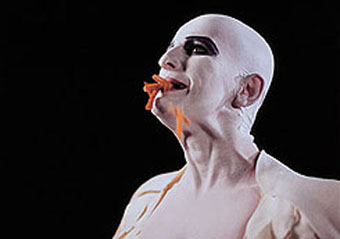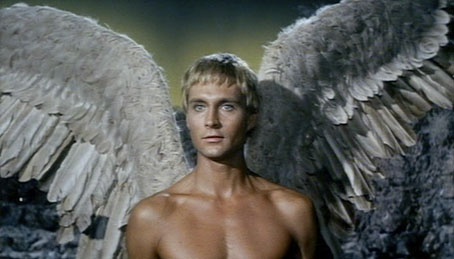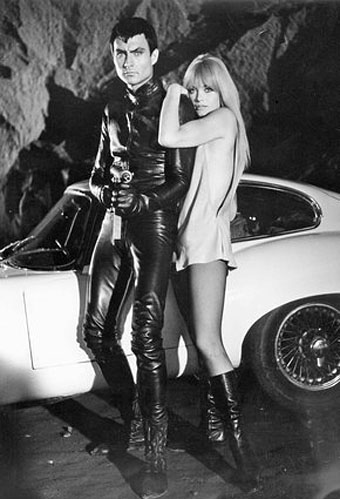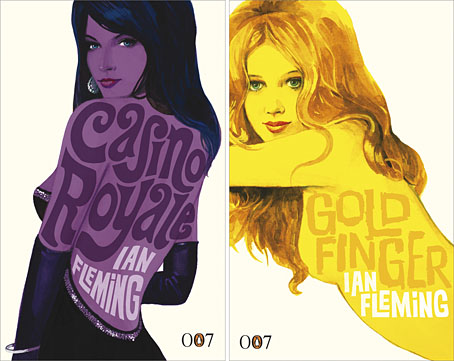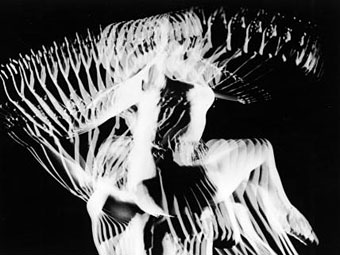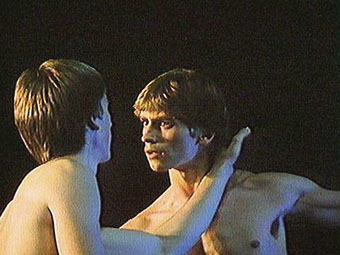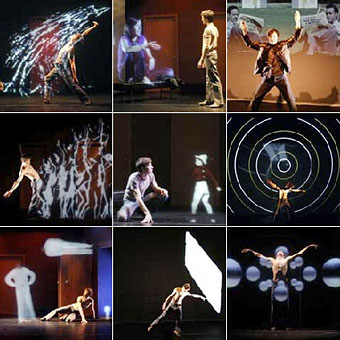The year of rebellion: If… not when
| Lindsay Anderson’s If… forty years on.
Category: {film}
Film
Harpya by Raoul Servais
Classic animated short from 1979 which is funny and creepy in equal measure. Harpya won the Palme d’Or for best short film at Cannes that year and in its own small way could be seen as continuing the Belgian taste for Symbolism and Surrealism.
Previously on { feuilleton }
• Bruges-la-Morte
• Short films by Walerian Borowczyk
• Taxandria, or Raoul Servais meets Paul Delvaux
John Phillip Law, 1937–2008
Pygar the angel, Barbarella (1968).
John Phillip Law, who died on Tuesday, was featured here last year in a look at Mario Bava’s crazy live action fumetti, Danger Diabolik (below). Law made that film the same year as he played a blind angel in an equally crazy slab of Sixties’ decadence, Barbarella. In a more serious role, he played opposite the very formidable Rod Steiger in The Sergeant which was released the same year; together with Victim, this was one of the first films I remember watching that dealt with same-sex attraction (albeit in the usual angst-ridden mode), with Law’s character being the understandable object of Steiger’s doomed affection.
After those heights, things tended to be more down than up but I do have an affection for Ray Harryhausen’s The Golden Voyage of Sinbad (1974). Law’s Sinbad was pretty good even if he spends much of the time fighting monsters while Tom Baker was great as the villainous Koura. And I always appreciated that screenwriter Brian Clemens made Lemuria the destination of the voyage, a lost continent mentioned by Madame Blavatsky and many of the Weird Tales writers, including HP Lovecraft in The Haunter of the Dark.
Danger Diabolik (1968).
Previously on { feuilleton }
• CQ
• Danger Diabolik
Recovering Bond
Penguin is really coming up with the goods these days, living up to their reputation as a house with high standards of cover design, unlike Picador and the shabby way they treated Cormac McCarthy recently.
Ian Fleming’s Bond novels are the latest to receive a makeover with some fabulous art from illustrator Michael Gillette. 2008 is Fleming’s centenary so the books have been republished as demi-format hardbacks with these new designs adorning the jackets. Each cover features a different girl matched to the theme of the book (yes, I know they’re women but in Bond’s world women are always girls unless they’re Miss Moneypenny); each cover also features groovy period type which alludes to the hand-drawn elaborations of the Sixties and Seventies. The effect is reminiscent of the poster art for the 1967 film of Casino Royale (below) which used a naked girl as the focal point; all Bond posters before and after this place oo7 himself centre stage. Penguin even dare to push the level of pastiche by making On Her Majesty’s Secret Service look rather like an old romance novel, not such a surprising decision since this is the book where Bond gets married.
My favourite Bond covers remain the old Pan paperbacks from 1963 but that’s just me; these look great. There’s been a persistent moan recently from authors and publishers worrying about file sharing as they foresee the publishing world going the same way as the music business. The solution is obvious: you can’t stop texts being copied and distributed but you can make the books themselves desirable objects so make them worth buying and owning. Penguin has numbered the spines of the new Bond books as they did with their recent Sherlock Holmes reprints, a smart appeal to book collectors as well as a tip to read them in the order they were written. “Smart” is the key word here; Picador take note.
Update: The Pan covers mentioned above were designed by Raymond Hawkey. Bond site MI6.co.uk has some details about the designer.
Elsewhere on { feuilleton }
• The book covers archive
Previously on { feuilleton }
• Repackaging Cormac
• The World’s Greatest Detective
• James Bond postage stamps
• Boys Own Books
Norman McLaren
Pas de Deux (1968).
News of a theatre piece celebrating the creativity of Norman McLaren, the pioneering Scots (and gay) animator and film-maker, had me searching YouTube again for his work. His short film Neighbours (1952) is very well-known, oft-cited and imitated for its pixillated character movement. No surprise to see it there, then, along with other works such as Boogie Doodle (1941), Fiddle Dee Dee (1947), A Phantasy (1952), Blinkety Blank (1955) and several others.
Less well-known is a favourite film of mine which hadn’t been YouTubed last time I looked but which is now there in two parts, Pas de Deux (1968). This is a black and white film of a simple ballet performance transformed by its presentation to yield something that could only exist on film. Careful lighting, an atmospheric score, judicious use of slow motion and the stunning application of optical printing to multiply and mirror the figures makes one of the best ballet films I’ve ever seen; it was also one of McLaren’s personal favourites among his many films. He used slow motion again for two more dance works, Ballet Adagio (1972) and Narcissus (1983), one of his final films which impresses for its overt homoerotics but is less striking than its predecessor. The only version of the latter on YouTube is this scratch version with the visuals set to more recent music.
Narcissus (1983).
The best way to see McLaren’s incredible films is at a decent resolution, of course, and the National Film Board of Canada have made them available on a seven-DVD box set.
The theatre work mentioned above is Norman by Michel Lemieux and Victor Pilon which is at Macrobert, Stirling, from 17–19 April, 2008 then the Theatre Royal, Brighton from 6–10 May, 2008.
In an improbable act of theatrical alchemy, dancer/choreographer Peter Trosztmer literally inhabits McLaren’s cinematic universe. He dances, weaves, converses and interacts with the animator’s pulsing images and leaping figures, set loose in a riotous ballet of line, light and movement.
Previously on { feuilleton }
• Reflections of Narcissus

